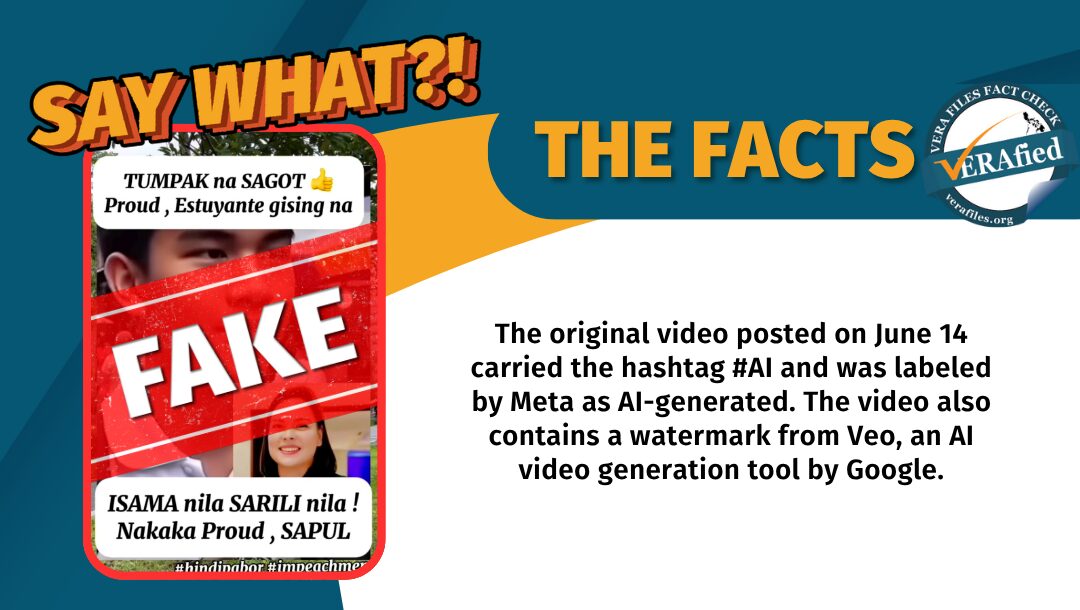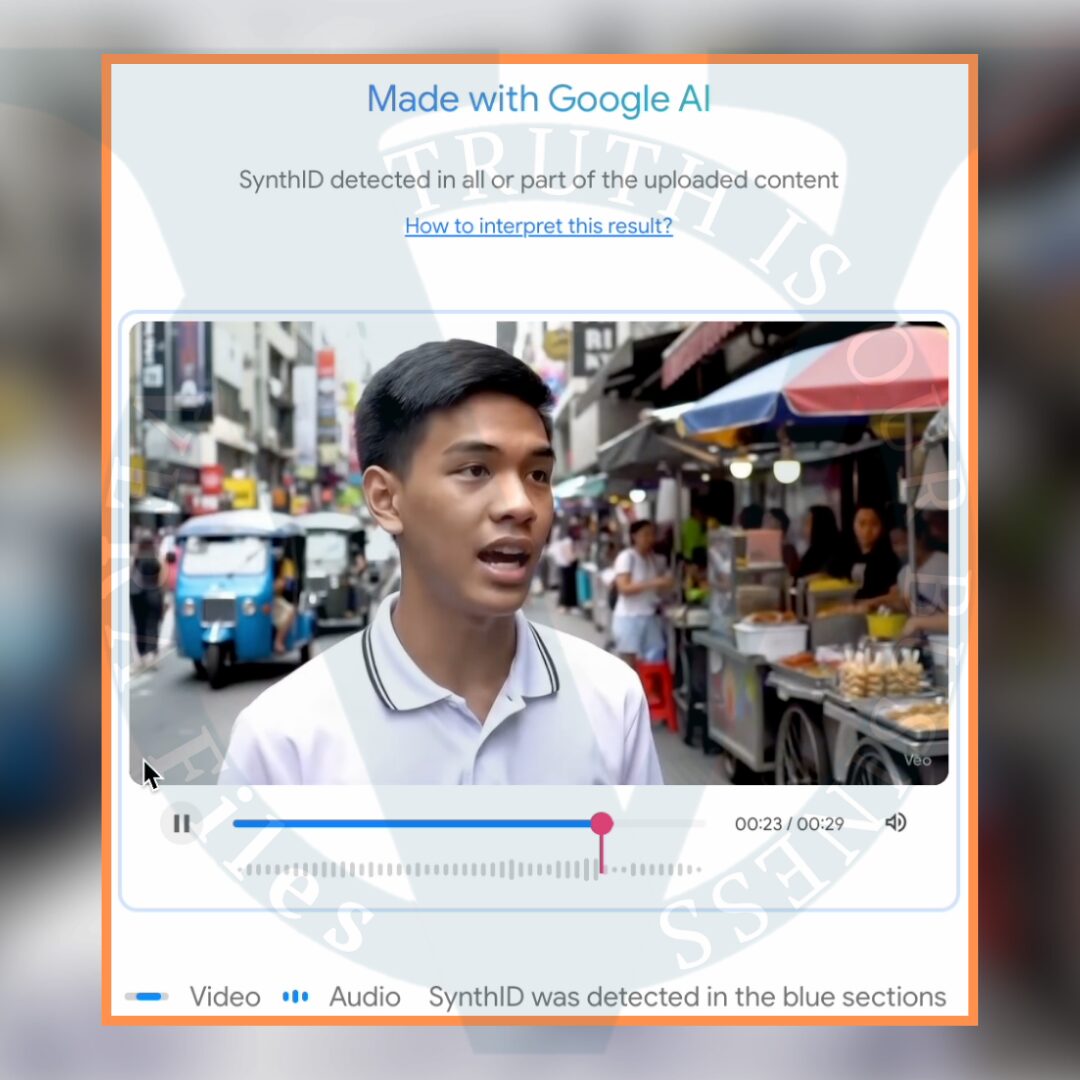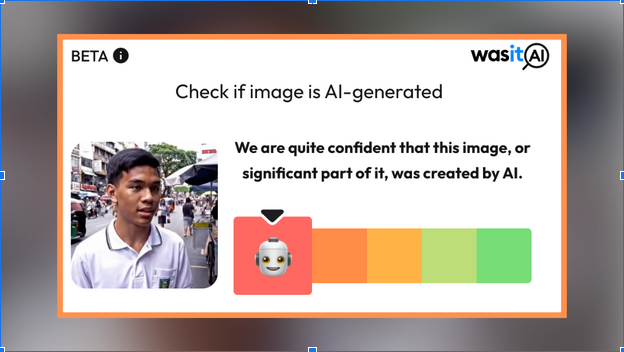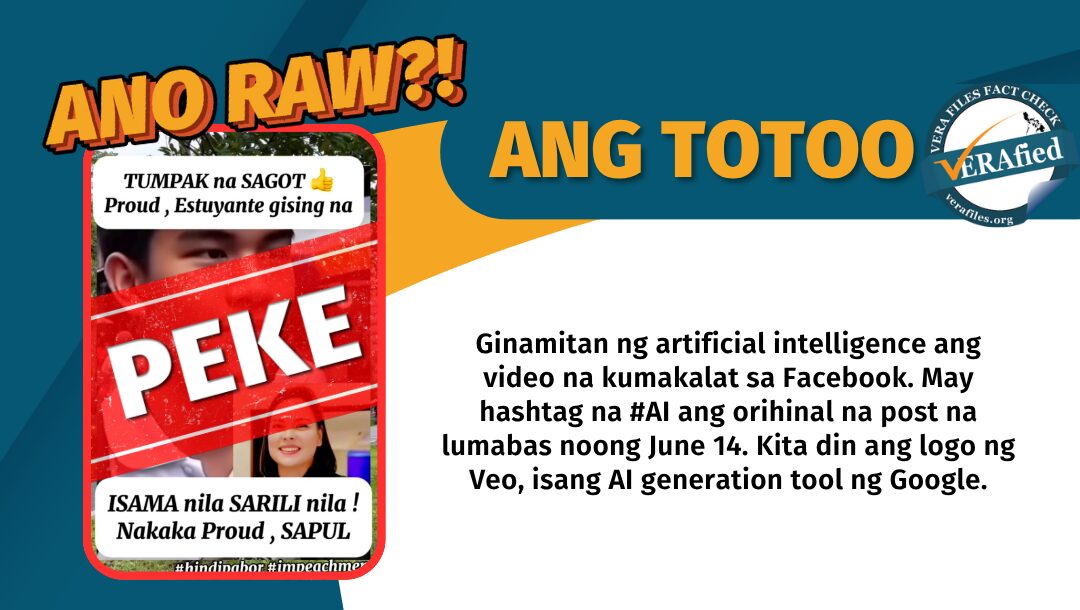Multiple Facebook reels have reshared a video supposedly of a street interview with students describing the impeachment trial of Vice President Sara Duterte as “selective justice.” The clip was made using artificial intelligence.
At least six different videos featured an interviewer asking three young men if they were in favor of Duterte’s impeachment. Their replies:
“Man 1: No… because it is obviously politically motivated.
Man 2: I mean, maraming may confidential funds sa gobyerno, iba nga bilions pa (many have confidential funds in the government, others even have billions), but why single out the VP? They want justice but their justice is selective.
Man 3: If these politicians are really serious in cleaning up the government, then investigate all and isama na rin nila mga sarili nila (they should include themselves, too).”
The original video was published by the FB page AY GRABE on June 14. The page describes itself as “[featuring] ideas, opinions, news, stories and events through the use of AI.”
The post carried the hashtag #AI, and was labeled by Meta as AI-generated. Meta places an AI content label on posts where “industry standard AI image indicators [were] detected” or if a post author indicates AI-generated content.
The video also bore a watermark from Veo, an AI video generation tool by Google.

Looking for tell-tale signs of GenAI content
The first step in inspecting content potentially made with generative AI is to look for visual discrepancies, such as distorted body parts, unnatural movements or even illegible text. VERA Files Fact Check observed several in the circulating video:
Checking for watermarks
A watermark for Veo, Google’s AI video generation tool, is visible in the bottom right corner of the video.
Additionally, media generated with Google’s AI consumer products now also contain an invisible digital watermark called SynthID. VERA Files Fact Check is among the early testers for Google’s SynthID Detector tool.
SynthID was detected in 23 seconds of the 29-second video, covering the entire portion of the interview with the “students.”

AI experts indicate use of AI was likely
The video was assessed by the Deepfakes Analysis Unit (DAU) of the India-based Misinformation Combat Alliance, who said that the audio and video tracks of the FB reel are “suspect and cannot be held as genuine or authentic.”
The DAU ran the video through three different AI-detection tools—WasItAI, AIorNot and IsItAI—which all suggested with high confidence that the video may have been AI-generated.
They said:
“The video is looking very sharp, [we’d] go so far as to say that it resembles the characteristic sheen of [AI-generated] videos… Secondly, zooming in on the [tricycles] reveals no number plate. For a video with such clarity, don’t you think it is weird that that number plates appear to be invisible or written in gibberish?”

The fake video circulated following the Senate’s June 10 decision to return Duterte’s impeachment case to the House of Representatives to “rectify constitutional infirmities” amid complications of the trial crossing over into the 20th Congress. The House deferred acceptance the day after, citing the move as unconstitutional.
The vice president was impeached on Feb. 5 for “betrayal of public trust” on grounds of graft, corruption and malversation of confidential funds and threatening violence against the president, among other acts.
As of June 18, reuploads of the original video have collectively garnered over 136,000 reactions, 25,600 comments, 57,100 shares and 8.6 million views.


